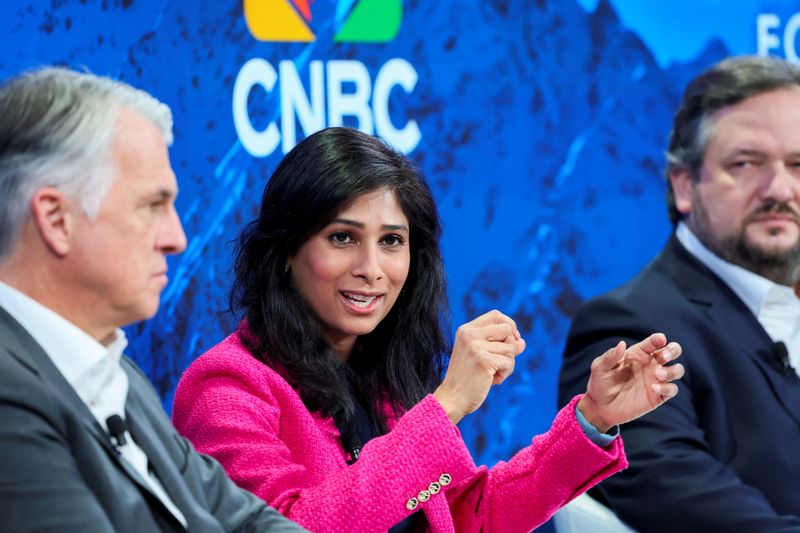
©Reuters. FILE PHOTO: Sergio P. Ermotti, CEO of UBS Group, Gita Gopinath, First Deputy Managing Director of the International Monetary Fund (IMF) and Slawomir Krupa, CEO of Societe Generale attend the 54th Annual Meeting of the World Economic Forum in Davos, Switzerland
2/2
By Leika Kihara
TOKYO (Reuters) – The Bank of Japan can avoid upsetting global markets with its policy shift by acting gradually when it raises interest rates and providing clear communication along the way, the Monetary Fund’s first deputy managing director said on Friday. international, Gita Gopinath.
Japan’s output gap will remain closed until next year, and this year’s annual wage negotiations will produce higher wage growth than last year, allowing the central bank to end yield curve control (YCC) and to the massive asset purchase program, he said.
The end of the negative interest rate policy in place since 2016, a move that markets expect to happen by April, is also likely to be smooth as there is clear recognition by investors that adequate real borrowing costs to inflation will remain very low, Gopinath said.
But further increases in the short-term policy rate should be gradual and implemented over several years, he said.
“Regardless of whether you do the first increase in two or three months, the important thing is to raise rates slowly, over a few years,” he told Reuters in an interview.
“As long as the BOJ moves gradually, which is what it has signaled it will do, and provides the right communication to accompany it, this should not have very large implications for the rest of the world,” he said.
As part of efforts to revive growth and sustainably reach its 2% inflation target, BOJ guides short-term interest rates to -0.1%, caps long-term bond yields around zero with YCC and buys huge amounts of assets to pump money into the economy.
But with inflation running above 2% for more than a year, the BOJ has laid the groundwork for exiting its complex stimulus program, with a Reuters poll pointing to April as the likely timeframe to end negative rates.
Gopinath said it is also important to keep Japan’s financial system stable as it exits accommodative policies, including by ensuring that minimum liquidity requirements are available not only to large banks but also to their smaller counterparts.
He said there is uncertainty regarding the level at which Japan’s interest rate would be considered neutral, although some IMF estimates suggest the nominal rate would be between 1-2% if it were at a neutral level.
Given uncertainty about the economic outlook, the number and pace of short-term rate hikes should depend on the data, he said.
“The purpose of moving gradually is to gain confidence in the incoming data and make sure we don’t move prematurely” and trigger downside risks, he said.